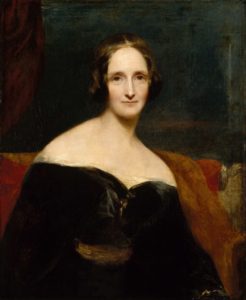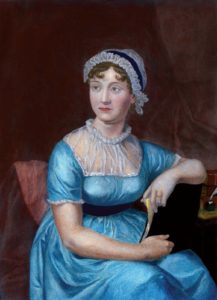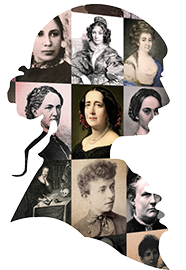As the Bibliodos project continue its progress toward an inclusive library of adapted literary work of some of the most influential stories of all time, I realize that March 8th 2021, marks a celebration of women around the world. Therefore, what better way to participate than to look at some of the most influential written work ever published by women?
Let’s start with our very own authors in the Bibliodos Project, namely Mary Shelley and Jane Austen.
Mary Shelley is the author of Frankenstein, or the Modern Prometheus, one of the most recognized and adapted novel in the fiction genre. She was a young and bright woman, who grew up in a politically and literary active world. Her mother, Mary Wollstoncraft is recognized as one of the founder of feminist philosophy with works such as ‘A Vindication of the Rights of Woman’ (1792) where she argued for women’s education and for the same fundamental rights as men. Throughout her life, Shelley ‘continued to practice her mother’s feminist principles by extending aid to women whom society disapproved of’[2]. However, her life was not an easy one. Writing a famous novel did not suddenly make her a recognized author, but rather a woman, whose work was constantly questioned. Fiona Sampson in the Guardian writes: ‘It’s hard to imagine a male author who had experienced similar popular and critical success being so consistently knocked back.’[3]
Jane Austen, who’s Pride and Prejudice novel has already been adapted to the Bibliodos platform, is another author that defied convention in her writing but also her own life. While her stories are at first, romantic tales of matches made in heaven, they display a deep layer of criticism towards 18th century convention and norms in regards to the role of women in society, their rights and future.
Despite having only 2 women in the initial list of the Bibliodos Project, the list does not have to stop there. The platform was created for teacher, educator and trainers to use, update and add content, which means that more art works written by not only women, but any author, regardless of their gender, status, disabilities can be added to the platform.
In the article “Fluency without fear” the writers state that while we learn English through reading novels and poetry, mathematics is taught through fast memorization and tested under timed conditions. That is one of the reasons why people disconnect, reinforcing the misconception that mathematics is all about speed and memorized methods and that it is a stress inducing field because the stakes are considered too high.
Within the ‘classical’ realm, which implies that the stories are in the public domain, and therefore free of use, strong women written work such as the following can be adapted, or simply enjoyed:
- Wuthering Heights by Emily Brontë 1847
- Jane Eyre by Charlotte Brontë 1847
- Middlemarch by George Eliot 1871
- The Complete Poems of Emily Dickinson by Emily Dickenson
- North and South by Elizabeth Gaskell
- Anne of Green Gables by Lucy Maud Montgomery
- Little Women by Louisa May Alcott
- A Vindication of the Rights of Woman by Mary Wollstonecraft 1790
- The Romance of the Forest by Ann Radcliffe 1791
- North and South by Elizabeth Gaskell 1854
- The Mill on the Floss by George Eliot 1860
- And so many more!
While it is recognized that there is a clear discrepancy in gender when it comes to the literary world, it is also interesting to look as well at other marginalized groups and their voice in the written world.
When we think about SLD, for example, we might commonly assume that someone with dyslexia, a cognitive disorder that affect reading and writing skills, is not going to be a writer. Yet, did you know that it is believed that Agatha Christie, despite never diagnosed had learning disabilities? Agatha Christie is one of the most famous British novelist in the detective genre. She wrote more than 66 novels, a number of which have been adapted to the screen. In her own words, through later research and analysis, it was understood that ‘she had difficulty with spelling, arithmetic, the mechanical aspects of writing, and foreign language learning.’[6] And yet, the influence of Hercule Poirot as a detective still roams the classrooms of high schools in Europe.
So today, as Bibliodos continue its journey in the field of inclusion and adaptation, we remember that perfect inclusion is not yet achieved. And yet, we are one step closer.
Visit the project website : bibliodos.eu/![]() Follow the project on Facebook: @Logopsycom
Follow the project on Facebook: @Logopsycom
#Bibliodos #accessibilité #littérature #erasmusplusproject #educationforall #readanytimeanywhere
In collaboration with : Citizens In Power / Πολίτες Σε Ισχύ, MYARTIST, Langues Plurielles, Les Apprimeurs, Istituto dei Sordi di Torino
Sources:
[1] https://commons.wikimedia.org/wiki/File:RothwellMaryShelley.jpg
[2] https://en.wikipedia.org/wiki/Mary_Shelley
[4] https://www.britannica.com/biography/Jane-Austen/images-videos
[5] https://www.dariah.eu/activities/working-groups/women-writers-in-history/
[6] https://www.researchgate.net/publication/232441698_Agatha_Christie%27s_learning_disability




